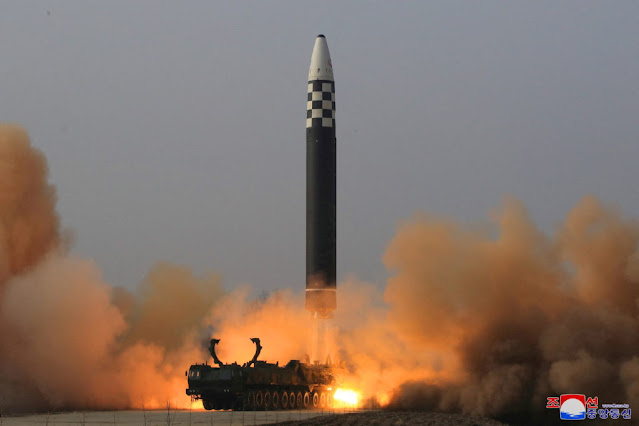Nuclear missile fired from North Korea could hit US in 33 minutes, says Chinese study
An intercontinental ballistic missile fired from North Korea could reach mainland US in approximately 33 minutes, a Chinese study has found.
 |
| A missile fired from North Korea could hit US in 33 minutes: Chinese study |
The United States is half-a-world away from North Korea, but an intercontinental ballistic missile fired from the hermit state could reach mainland US in approximately 33 minutes, a Chinese study has found.
Open Nuclear Network analyst Tianran Xu told CNN that Chinese scientists carried out a simulation of a North Korean missile attack on the US. The findings were alarming: the warhead could strike central US if missile defence systems failed to intercept it. Targets on the west coast and the east coast would be within easy reach, said Xu.
According to the South China Morning Post, the Chinese study involved the hypothetical launch of North Korea’s Hwasong-15 missile. It is a nuclear-capable missile with an effective range of 13,000 km, “sufficient to hit the entire US homeland”, said the team of scientists at Beijing Institute of Electronic System Engineering which ran the simulated test.
The research shows that if the missile is launched from central North Korea, the US missile defence headquarters would receive an alert about 20 seconds later. The first batch of intercepting missiles would take off within 11 minutes from Fort Greely in Alaska. If they failed, another wave of interceptors would be launched from the Vandenberg Space Force Base in California.
The simulation suggested the existing US missile defence network had gaps in its “kill chain” system to identify and defend against an attack. This could be exploited by an opponent.
In fact, the US’s state of the art Ground-based Midcourse Defense (GMD) program has a failing test record in intercepting missiles. According to the Centre for Arms Control and Non-Proliferation, the GMD system has been effective 55 per cent of the time in highly-scripted tests, and in a real world scenario, it “cannot be relied upon to protect the US from even an extremely limited attack”.
Acknowledging this potential weakness, Frederick K Lamb, Professor of Physics at the University of Illinois told CNN, “If North Korea were to fire a nuclear-armed ICBM at the United States, we cannot be sure that our missile defence system would prevent [it].”
Comments
Post a Comment